Dyscalculia 101
Your One-Stop Shop for Learning About Dyscalculia (dis-kal-KYOO-lee-uh)
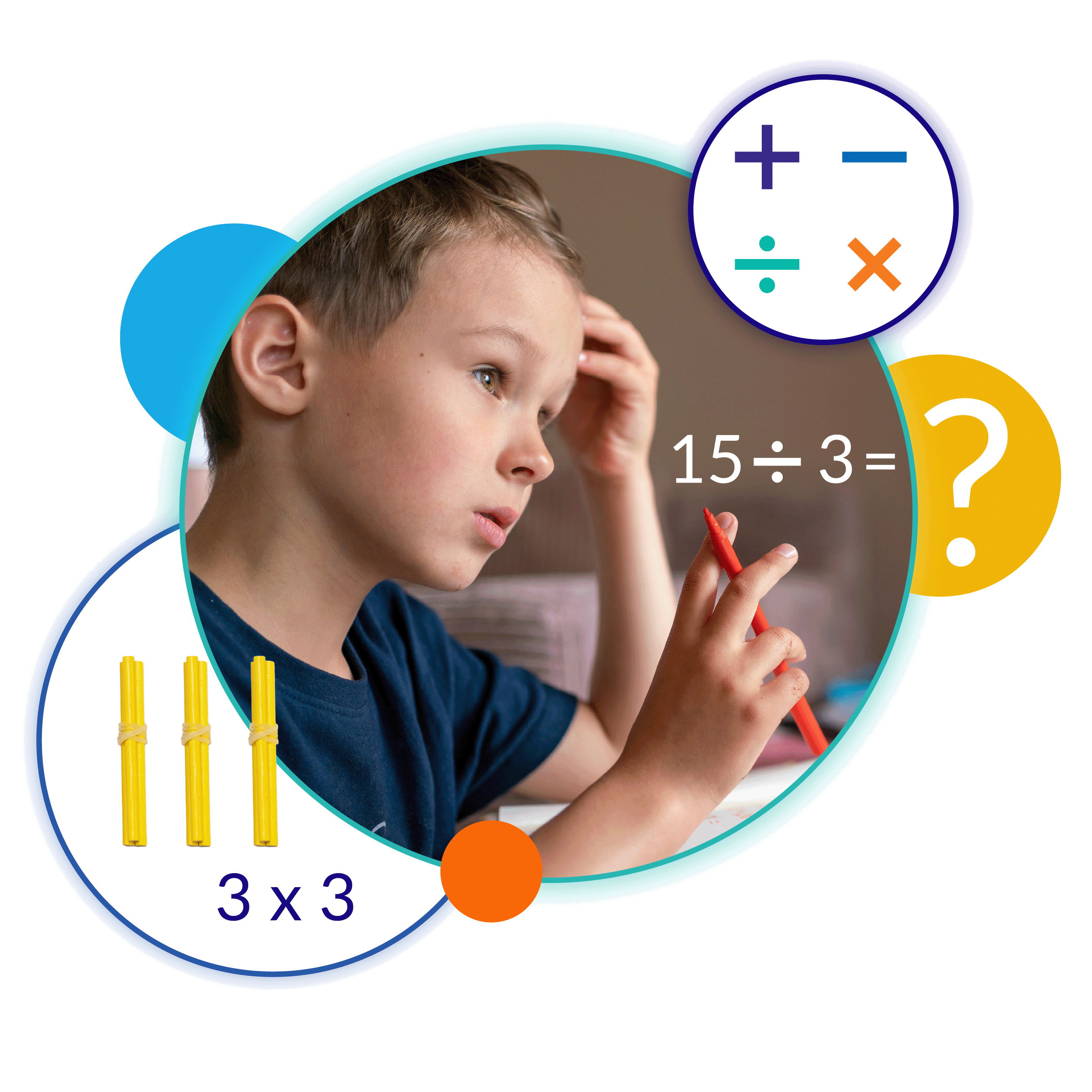
Dyscalculia: The Unaccounted-For Disability
Dyscalculia is a learning disability that affects one’s ability to learn math and may cause difficulty counting. recognizing patterns, telling time, having a sense of direction, and more.
Research shows that people with dyscalculia succeed in math when engaged in multisensory learning methods.
This is similar to how students with dyslexia, a disorder where you may have difficulties identifying how letters and words relate to speech sounds, may benefit from a multisensory approach.
Dyscalculia Statistics: Understanding the Numbers
This math learning disability is prevalent in classrooms around the world, yet dyscalculia is not nearly as well-known as dyslexia.
- Research says between 3% and 7% of students worldwide have dyscalculia.
- That is one to two students in a typical classroom.
- 105 million+ students globally are estimated to have this math learning disability.
- This translates to 3 million+ students in the United States alone.
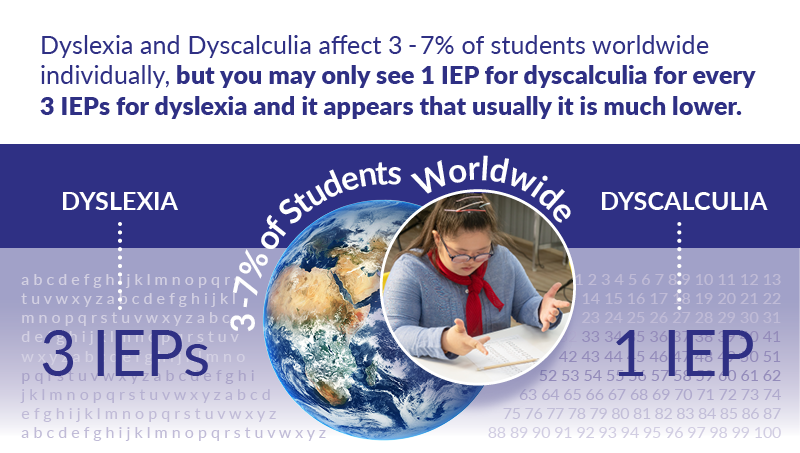
Screen for Dyscalculia as Early as Three
Our dyscalculia screener, DySc, is web-based and can be easily administered by early childhood educators and parents for learners 3-4, 5-7, 8 and up.
Free Dyscalculia Resources
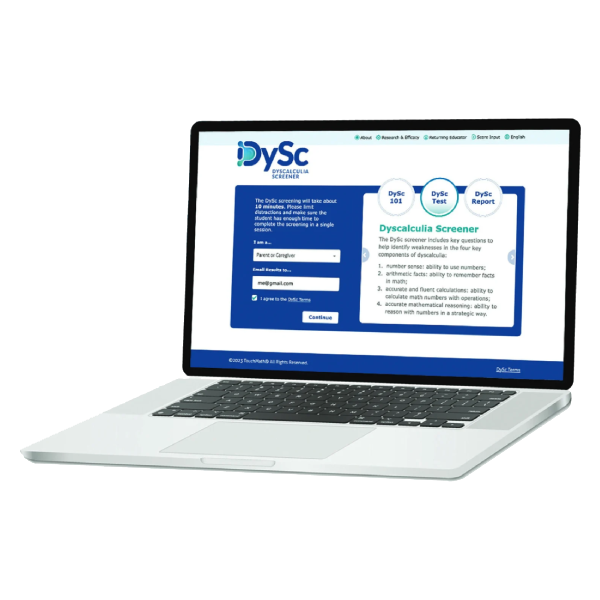
Dyscalculia Screener
Our comprehensive dyscalculia screener, DySc, is aligned to the American Psychiatric Associations DSM-5-TR and available at no cost to help identify weaknesses in four key components of dyscalculia.
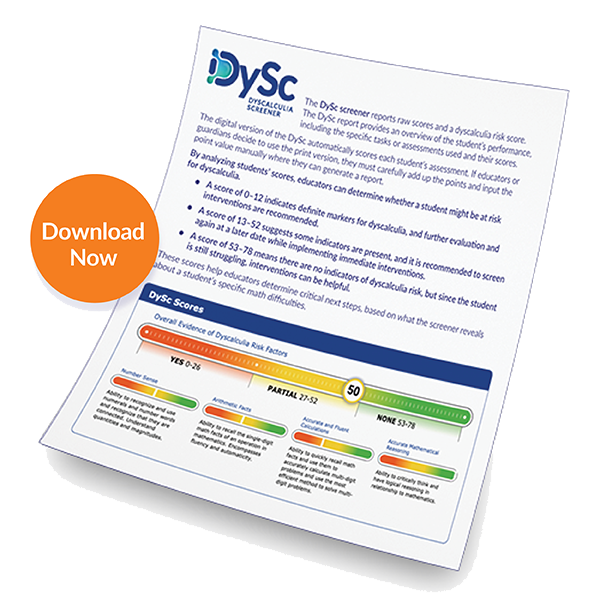
Dyscalculia White Paper
Get everything from what is dyscalculia to evidence-based strategies to support your students in achieving math mastery in our white paper, The Transformative Potential of Early Screening for Dyscalculia, The Discounted Specific Learning Disability.
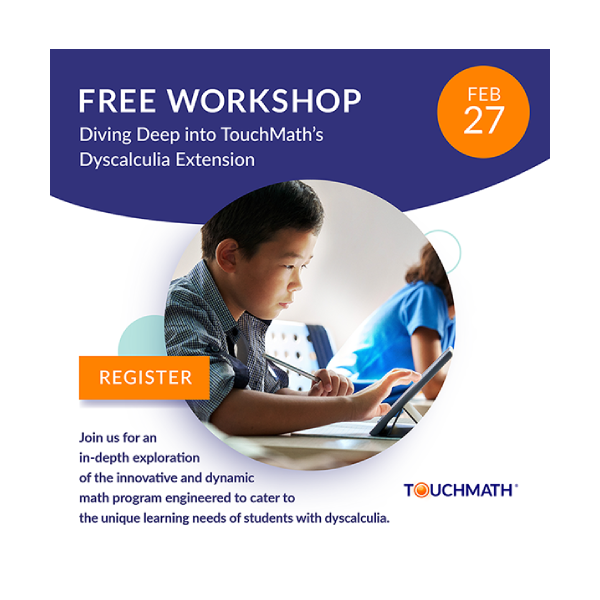
Dyscalculia Workshops
See what growing up undiagnosed with dyscalculia looks like, get lessons, and more with our library of workshop sessions.
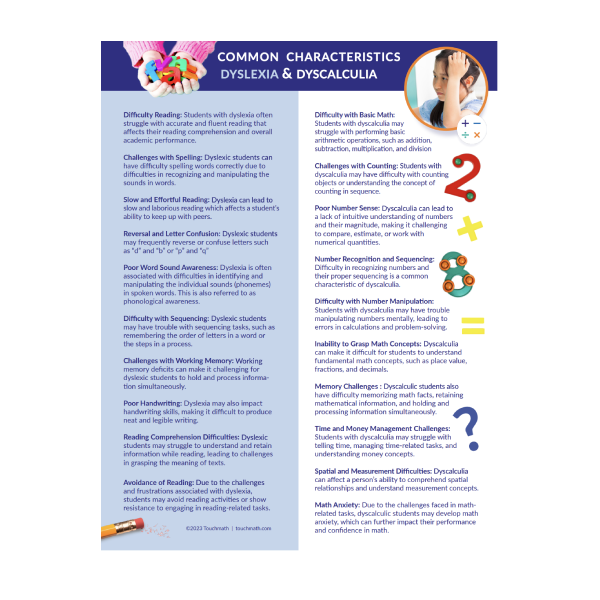
Dyscalculia Knowledge Center
Want more on dyscalculia and TouchMath? Check out our Teacher’s Lounge for blogs, resources, and more!
Want More Resources on Dyscalculia?
We've got you covered! Check out our latest blogs below.
Understanding Dyscalculia: Insights from Cognitive Science
Understanding Dyscalculia: Insights from Cognitive Science Dyscalculia, often called “math dyslexia,” refers to a persistent difficulty in understanding numbers and calculations despite normal intelligence and adequate education. A comprehensive overview featured in an educational-sciences volume (B9780443222245000011) outlines the latest findings,
How Teachers Are Spotting and Supporting Dyscalculia
How Teachers Are Spotting and Supporting Dyscalculia Math struggles in the classroom are often chalked up to lack of practice, low motivation, or a need for specialized teaching practices. But what happens when students continue to struggle with number sense,
Uncovering a Hidden Struggle: The History of Dyscalculia
Uncovering a Hidden Struggle: The History of Dyscalculia Dyscalculia—often dubbed “math dyslexia”—is far from a modern invention. Though less known than its linguistic counterpart, its roots trace back well over a century. This post explores how our understanding of this
Understanding Dyscalculia: Insights from Cognitive Science
Understanding Dyscalculia: Insights from Cognitive Science Dyscalculia, often called “math dyslexia,” refers to a persistent difficulty in understanding numbers and calculations despite normal intelligence and adequate education. A comprehensive overview featured in an educational-sciences volume (B9780443222245000011) outlines the latest findings,
How Teachers Are Spotting and Supporting Dyscalculia
How Teachers Are Spotting and Supporting Dyscalculia Math struggles in the classroom are often chalked up to lack of practice, low motivation, or a need for specialized teaching practices. But what happens when students continue to struggle with number sense,
Understanding Dyscalculia: Insights from Cognitive Science
Understanding Dyscalculia: Insights from Cognitive Science Dyscalculia, often called “math dyslexia,” refers to a persistent difficulty in understanding numbers and calculations despite normal intelligence and adequate education. A comprehensive overview featured in an educational-sciences volume (B9780443222245000011) outlines the latest findings,
Download: 10 Common Signs of Dyscalculia
Want the latest and greatest on dyscalculia and math interventions from TouchMath?
Complete the form to get monthly updates, resources, articles, Fun Sheets and more! Once submitted, you will get immediate access to our downloadable, 10 Common Signs of Dyscalculia.



